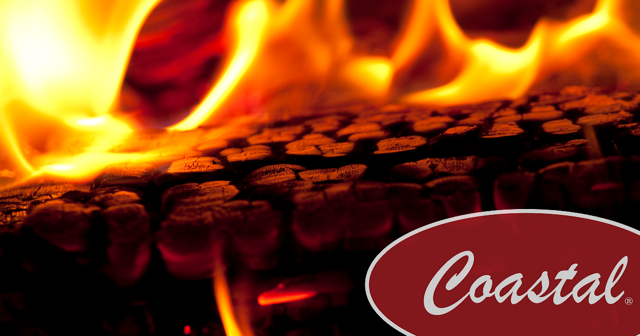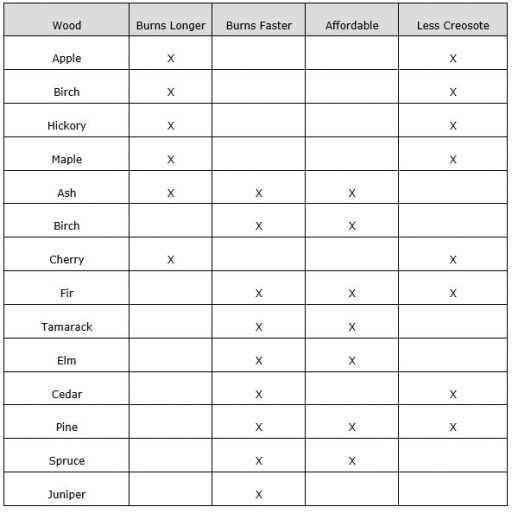Choosing the Right Wood for Your Stove or Fireplace
October 11, 2019
The wood you burn in your fireplace or stove matters. Even the right bag of pellets makes a big difference. Here’s a quick guide to help you choose the right wood for your needs, including heat output and creosote buildup.
Some of the Basics
Both soft and hard woods burn differently. Softer woods are great for starting a fire. These include poplar, fir, and pine. Longer burning fires require a harder wood such as maple or oak.
Coastal Tip: If you have an EPA-certified wood-burning stove or fireplace, you’re already one step toward an efficient, warm-burning fire. If not, it could be time to upgrade and get the most from your heat source.
Hardwoods Burn Long and Hot
These include maple, oak, ash, and birch. They also include fruit trees. Best of all, hardwoods have less pitch and sap, which means less creosote buildup. But, you will pay more for hardwoods, if you have it cut, split, and delivered.
Softwoods Burn Fast (and they’re affordable)
These include pine, spruce, juniper, cedar, alder, poplar, tamarack, and fir. Just be aware that pine and spruce can create a fair amount of creosote buildup. Juniper, which is quite abundant on the eastern sides of Oregon and Washington, is considered a softwood, but is nearly as hard as oak. It burns fast, but can also burn long. When burning juniper, be careful as the wood can be especially messy and clog your chimney.

Wood to Avoid
It’s best to avoid burning driftwood, painted or varnished wood, pressure-treated lumber, or MDF (medium-density fiberboard) in your fireplace or stove. These can cause considerable damage to your stove and piping, as well as your family’s health.
Moisture Matters
Whatever wood you choose, be sure you season it before burning it. When a live tree is cut, the moisture in that wood is often more than 50%. Chances are it would not heat your home. It would also be difficult to light and could build up residue in your chimney.
To reduce creosote and enjoy a better-burning fire, the moisture content in your wood should be between 15 and 20 percent. A wood moisture meter is an easy way to test a few pieces of your stack and determine if your wood is ready to burn.
Quick Discussion about Pellets
If you have a pellet stove, always choose high-quality pellets. Premium wood pellets will burn longer overall and thus burn a bit cleaner. To ensure you’re getting a good quality pellet, look for a heat output of 8,000 to 8,500 BTU, moisture content of 6.5% or less, low ash content, and try to avoid a lot of additives or bark.
To keep your pellets dry, store bags in the garage, outbuilding, or barn. If you must store them outside, be sure to cover them completely with a tarp and try to keep out as much moisture, and critters as possible.
Stop by Your Coastal Home & Hearth Department
You’ll find pros at your Northwest owned and operated Coastal who know a thing or two about heating your home with pellet, gas, and wood stoves. They might even know some locals who sell dry firewood by the cord all year long.
